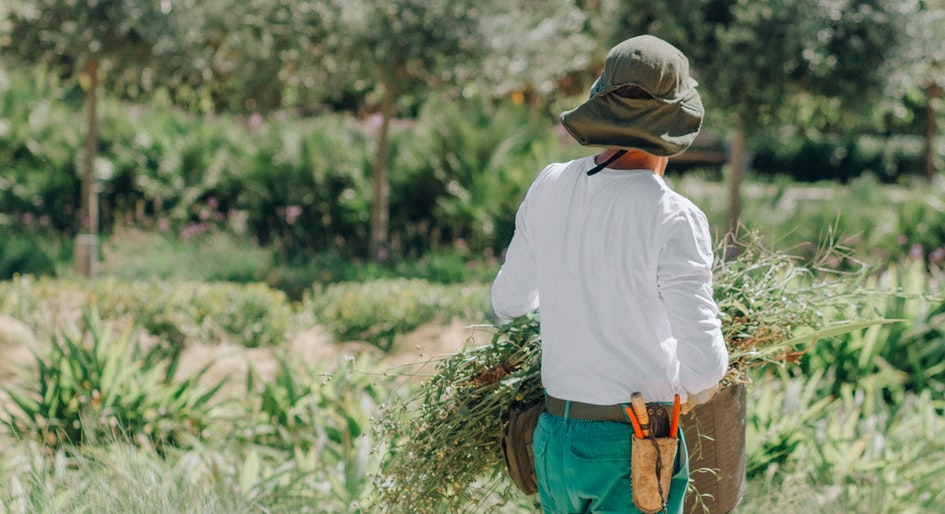Certain landscaping has implications on attracting or deterring pests and wildlife. How can condo corporations avoid choices that will apply pest pressures to their properties?
Ways to naturally deter pests
Landscaping creates ecosystems where different organisms interact and provides all the necessary resources for pests’ survival: food, water, and shelter. The goal is not to eradicate pest populations but to suppress them to lower levels, so pests don’t cause damage or become a nuisance.
- Avoid planting trees or plants that produce bright coloured fruits such as berries, drupes, aggregates and seeds. When they ripen, the colours and aromas produced attract pests and small wildlife looking for food. When they fall and decay, it provides a breeding ground for flies.
- Densely packed bushes, ground coverings and wall trailing vines at the base of your building invite unwanted pests with the promise of thick shelter. And, if you offer inviting shelter at the base of your building, cracks in the façade or any unsealed doors, windows or vents serve as entry points inside.
- Install a one-metre-thick gravel strip, made up of one-centimetre pebbles, around the entire perimeter of your building to deter pests from taking shelter at the base of your building and finding a way inside. This is particularly important against ground-dwelling pests such as ants, centipedes, spiders, ground beetles and rodents that can burrow in building foundations.
- Integrate pencil cedar mulch as much as possible instead of organic mulch, as cedar retains less moisture and naturally repels certain types of ants and subterranean termites.
- Avoid planting brightly coloured and scented plants close to entryways or near pools, or recreation areas. When these plants bloom, they attract stinging insects or arthropods.
- Inspect incoming landscaping materials, especially soils. Pests such as European fire ants, termites and other soil dwelling insects can be brought onto the property through landscaping supplies.
- Select grasses that thrive in the appropriate climate of your building—cold or warm weather. This allows for pest-resistance with no significant pest damage.
- Plant multiple species of grass to help offer diversity for both weather and pest resistances. Properly aerate your landscaping so plants can grow well and help shield against pests naturally.
- A flower bed with dense shrubs or vines will attract rodents, wasps, birds, ants, beetles, aphids and wasps, as it offers shelter and food.
- It’s imperative for all landscaping to be well maintained through proper pruning, lighting and watering so plants thrive, and pests will be deterred naturally.
Ways to maintain landscaping and hardscapes
Once you know what to plant and what to avoid, it is just as important to maintain it to continue relieving pest pressures from your building.
- Ensure fountains and pools regularly circulate water to prevent insect breeding – still water is a magnet for insects like mosquitoes, midges, racoons, birds and skinks that need to actively drink water and bathe.
- Change the water in bird baths or other water features at least once a week, and make sure patios and sidewalks have proper drainage to avoid water pooling.
- Trim tree branches and shrubbery at least one metre away from all walls and windows to avoid creating a landscape bridge from trees and bushes to the building; make sure ornamental planters are not overwatered and well pruned.
- Remove any tree branches that touch the roof of your building as carpenter ants, rodents, squirrels and raccoons will use these to climb.
- Ensure grass stays mowed regularly as tall grass offers shelter to unwanted pests.
- Monitor trees for insects. Trees can become damaged from too much pest activity, and if it is not caught quickly it is too late for the tree so proactive monitoring is crucial.
Using natural pest deterrents and proper maintenance of your landscaping will keep plants healthy so there will be less of a need to control pests with factors such as pesticides. Pollinators like butterflies and honeybees will thrive in these properly maintained natural ecosystems. When insecticides need to be used, your pest management professional will know how to apply them at the right times – when flowers are not in bloom, and at either dusk or dawn when bees and butterflies are less active. Educate tenants on what is being used and why to help address any concerns they may have on the matter. Post proper signage where applicable depending on the label requirements and local laws.
When managing your condo buildings, every detail should be considered. Landscaping choices can directly impact pest activity in and around your building, so it is important to always keep landscaping maintained as well as to know from the planning stages what plants may attract pests and which ones may help deter them.
Alice Sinia, Ph.D. is quality assurance manager of regulatory/lab Services for Orkin Canada, focusing on government regulations pertaining to the pest control industry. With more than 20 years of experience, she manages the quality assurance laboratory for Orkin Canada and performs analytical entomology as well as provides technical support in pest/insect identification to branch offices and clients. asinia@orkincanada.com or visit orkincanada.com.
Photo by Nataliya Vaitkevich





